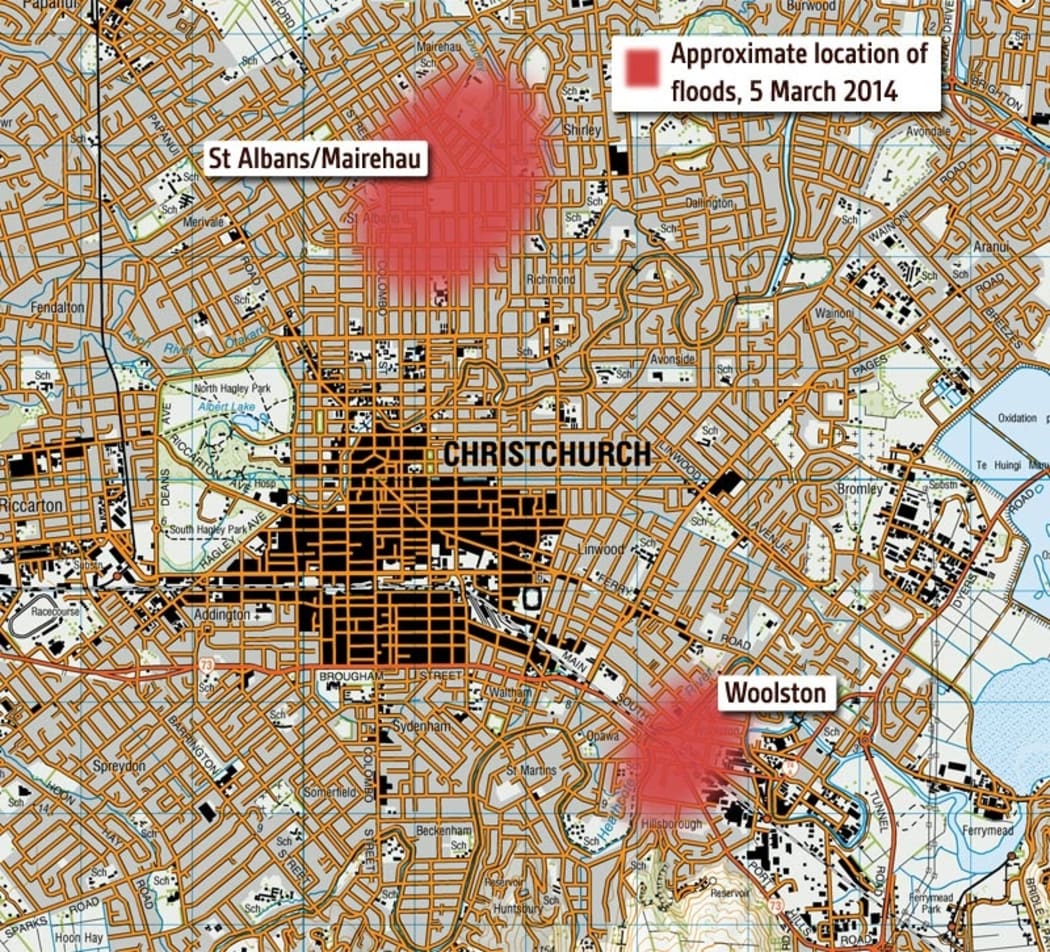Christchurch mayor Lianne Dalziel has confirmed the city council is working to fast-track flood management plans for areas of the city hardest hit by this week's floods.
It follows an emergency meeting involving the mayor, engineering officials and Canterbury Earthquake Authority Minister Gerry Brownlee on Thursday morning, as parts of the city were still recovering from Tuesday's severe storm.
Flood-hit residents have been asking why the city council has not done more to protect their homes, after many properties were inundated.
The council said on Thursday that 50 houses flooded in the Flockton basin, in the suburb of St Albans, and about 400 are considered to be at risk of flooding in another storm.
Ms Dalziel said the council is expecting a report back from council engineers by the end of March that will outline short and long term methods to ease the risk.
The report will include plans to put a Local Bill to Parliament allowing mitigation work to be undertaken much faster than through normal Resource Management Act channels, she said. If the legislation is approved, a comprehensive flood protection policy could be in place within two years. Ms Dalziel said as soon as the private bill is introduced, work can begin with or without the final legislation.
Ms Dalziel told Radio New Zealand's Checkpoint programme work was already under way to address the flooding risk in the Flockton basin and that has been validated by what happened this week. She said council engineers have told her that under current planning rules, the work could take five years to complete.

A map showing areas of Christchurch most affected by the flooding. Graphic: Map data from Land Information New Zealand
The Christchurch floods, as photographed by Radio New Zealand reporters
Prime Minister John Key on Thursday visited the suburb of Shirley where owners were cleaning up flood-damaged shops and businesses.
Mr Key said he had been advised of city council engineer findings that the flood risk to Christchurch remains the same as before this week's massive storm, but said that was not good enough for the long-term.
"Just reading some of the reports I've seen, you've got people that are getting regularly flooded and that's just not a long-term sustainable position."
Earthquake Recovery Minister Gerry Brownlee told Radio New Zealand's Nine to Noon programme on Thursday that engineers had concluded the assessment of the heightened risk of flooding since the earthquakes remained the same as before Tuesday's storm. Mr Brownlee supports the move to speed up work on mitigation options.
Residents criticise council
Gerry Brownlee and mayor Lianne Dalziel visited the flooded suburbs of in St Albans and Mairehau on Thursday morning.
Carrick Street in Mairehau is one of the worse affected and resident spent Thursday trying to clean up. Residents say they are so sick of the inaction over constant flooding since the February earthquake in 2012 they have formed a collective to try to get action on the problem.
Rose Lennon said there's been little help from the council and someone needs to be accountable. "The council haven't helped in any way - this is about our fourth flood now here. Everybody had rung and complained that the water was getting up to their floor levels. We just did whatever we could to try and get all the furniture up off the water."
Hamish Griffen said the lack of action and information from authorities means that residents are in the dark over the future.
In Aylsford Street in Mairehau, which runs alongside the flooded Dublin Creek, householders said they were pleased and grateful for the prompt response from the council.
However, Heathcote resident Sonya Bakkenes, who said the creek behind her family's home is a known flood risk, wanted to know why the council didn't help out with sandbags. Instead, she and her partner were left trying to improvise, using sleepers from the garden to try hold the water at bay, and the house ended up with half-a-metre of water inside.

Farmland and houses in Heathcote were inundated. Photo: RNZ / Conan Young
Over the hill in Lyttelton, Julia Sugarman and her neighbours rushed to build a makeshift barrier to keep a flash flood from entering their houses, using everything from breeze blocks to roofing iron. She is livid at the council for failing to provide sandbags to protect her home, despite repeated calls to them and emergency services over a 12-hour period.
Ms Dalziel told Radio New Zealand there were limited numbers of sandbags and while some got to residents, the priority in terms of those they had was businesses in St Albans and Woolston. "We are obviously going to review the sandbagging issue ... obviously it is of major concern."
Insurance advice
The Insurance and Savings Ombudsman said Christchurch residents affected by the flooding should contact their insurance companies before they start cleaning their homes.
Karen Stevens said she had seen cases where damaged items have been thrown out after a flood, causing problems when the homeowner tries to prove there was damage. Residents should make a list and take photographs of all their damaged items, she said.
More than 30 schools in Canterbury have contacted the Ministry of Education about flood-related damage.

